Krishna laughed. He played the flute. He stole butter from unsuspecting pots and shared poha with his friends. He danced under moonlight, often barefoot, and always free.
What I’ve come to love most about Krishna is this—he didn’t just accept joy, he was joy. And food? It was a huge part of that joy.
But here’s the twist that really stays with me: he never overdid it. There was indulgence, yes—but it had rhythm. Playfulness, but with purpose. Not because he was following some diet or rigid rule. Just because it made sense. It flowed.
In Krishna’s World, Food Was Sacred
In Krishna’s world, a bowl of curd wasn’t just a snack, it was affection, shared with love. A handful of roasted chana wasn’t plain, it was sacred. Over time, I’ve realised that his favourite foods were never just about taste. They told stories—of nourishment, mischief, generosity, and deep devotion.
That idea of prasadam changed everything for me. Food wasn’t just fuel anymore. It became a gesture, a connection. You offer it with love, receive it with care, and eat it with presence. And just like that, it transforms. It feeds more than the body.
Offering food before eating was never just a ritual in Krishna’s world. it was a moment of gratitude, made visible. And I try, in my own small way, to bring a bit of that sacredness to my plate too.
On Krishna’s Plate: Familiar Ingredients, Hidden Wisdom
Let’s look at Krishna’s favourite food, not through a nutritional chart, but as a kind of quiet guidance.
1. Makhan (Butter)
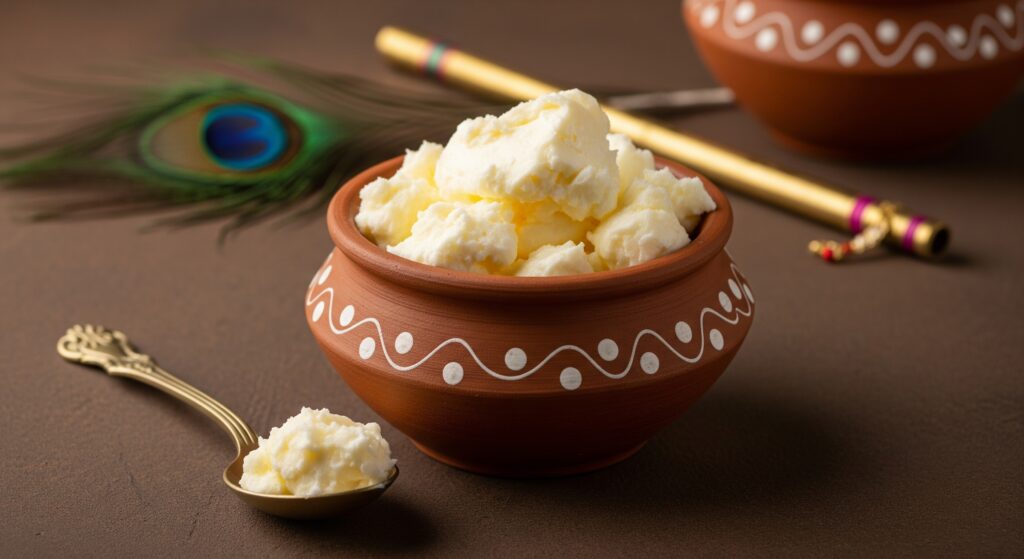
Hand-churned, hidden in pots, and worth a hundred stealth missions. Krishna’s first love. Lord Krishna’s favourite food was butter, simple, alive, and deeply nourishing. But he didn’t swim in vats of it daily. He took what he needed. Enjoyed every bite.
What it tells us: Real fats, in real amounts, are fine. Gluttony? Not so much.
2. Dahi (Curd)
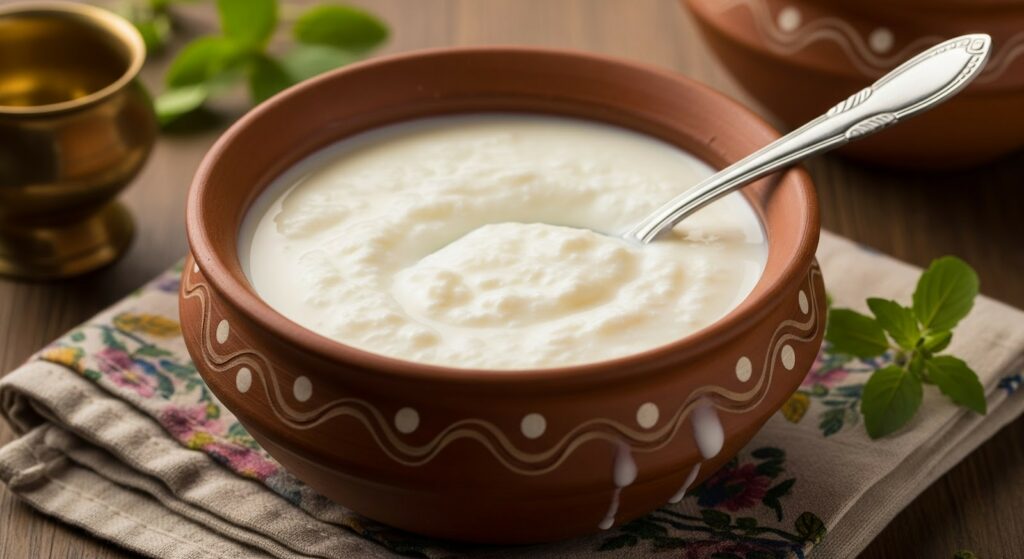
Not your packaged, flavoured variety. This was curd made at home. Set overnight, easy to digest, cooling to the body.
Ayurveda calls it a friend to digestion (if eaten right). Especially during summers or for calming sharp nerves.
What it tells us: Your gut loves fermented food. Keep it simple. Keep it alive.
3. Milk & Dairy Sweets
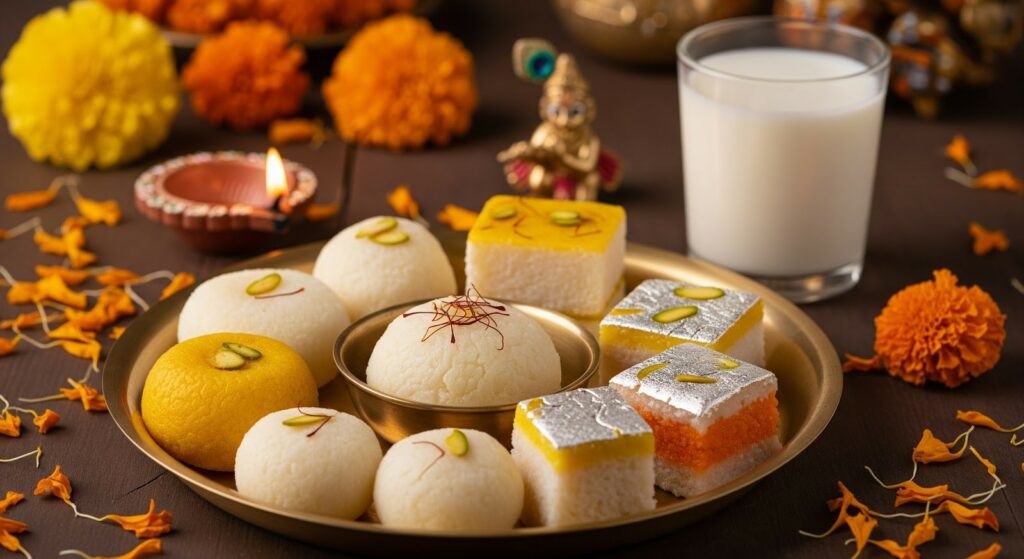
Krishna’s village life was drenched in dairy: milk at dusk, sweets for celebration, ghee on roti. Yet none of it was industrial. No hormone-fed cows or homogenised shortcuts.
This was food made from animals treated with care, cooked with intention, and eaten in moderation.
What it tells us: Food quality matters as much as the food itself.
4. Poha (Flattened Rice)
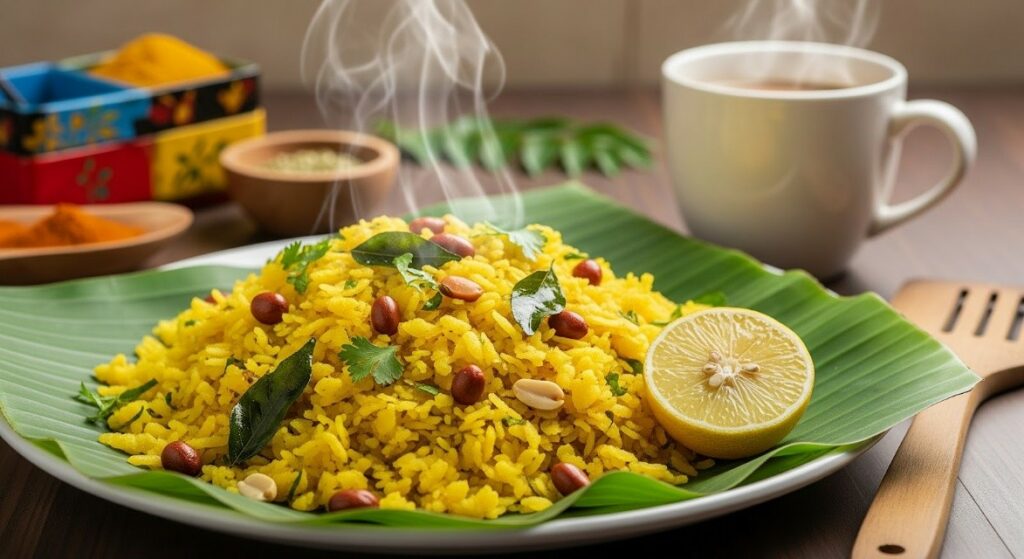
Perhaps the most tender moment in Krishna’s story comes not from a battle or a sermon, but from a humble bowl of flattened rice offered by a poor friend. Krishna’s favourite food wasn’t about wealth, it was about love. He didn’t just eat it — he honoured it.
Poha is light, iron-rich, and filling. But the story reminds us it’s also emotionally generous.
What it tells us: Simplicity, when wrapped in love, nourishes more than spice-laden feasts.
5. Fruits (Bananas, Jamun, Guava)
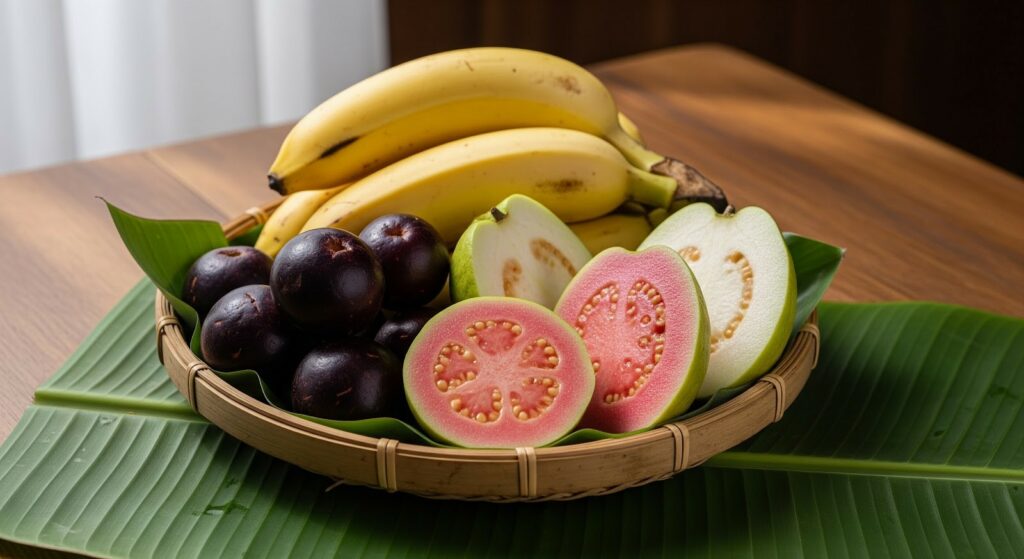
Eaten fresh. Picked with joy. Shared. Never measured. Always savoured.
Lord Krishna’s favourite fruit, like bananas and jamun, weren’t supplements. They were daily joys, packed with fibre, hydration, and sunshine. Krishna’s favourites were humble, local, and available to anyone with a tree nearby.
What it tells us: Not all sweets come in shiny wrappers.
6. Chana (Black Chickpeas, Roasted Gram)
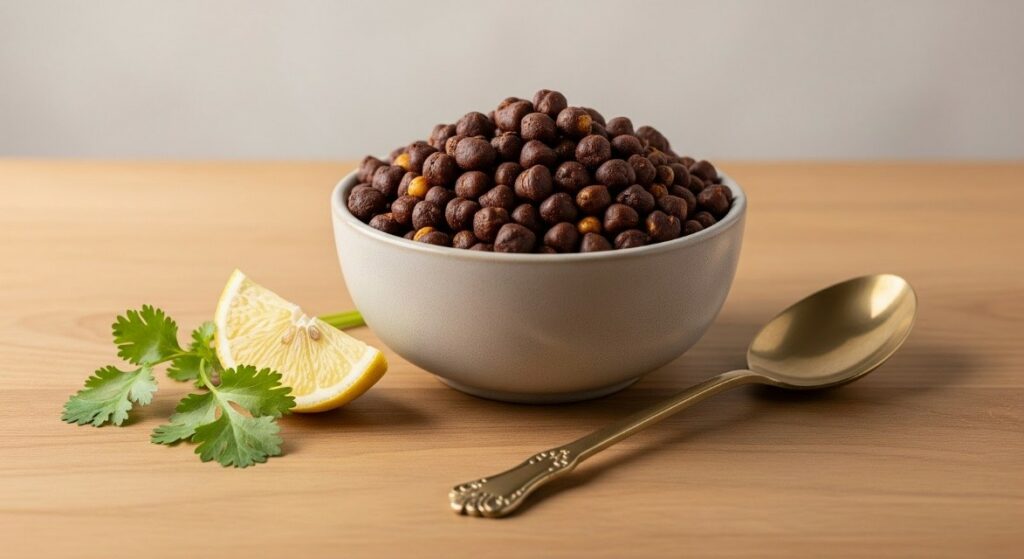
Dry roasted chana is the OG snack. Pocketable. Nutritious. No ingredients list.
It has protein. Fibre. Crunch. But most importantly, it carries a certain earthiness — something many of us have lost in the flurry of ‘superfoods’.
What it tells us: Power foods don’t always scream for attention.
7. Kheer & Homemade Sweets
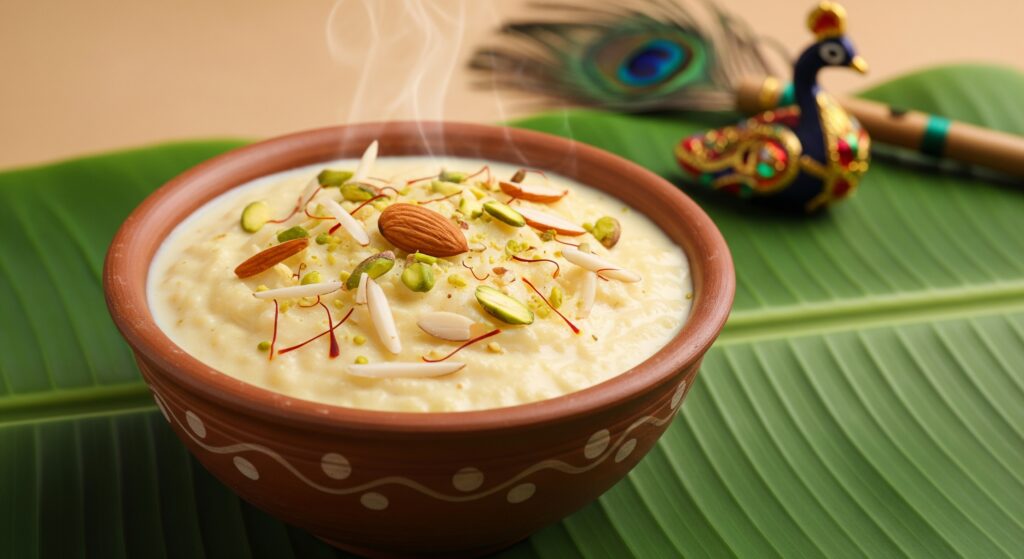
Sweetness wasn’t forbidden in Krishna’s world: it was just real. Rice kheer, made slowly. Peda, shaped by hand. Panjiri, rich with ghee and nostalgia.
Unlike sugar-loaded barfis from a box, these sweets carried intention. You knew who made them. You probably saw it simmer.
What it tells us: Sweet is fine. Sweet with story is better.
Also Know: Vrat Ka Khana: Top 7 Traditional Fasting Items for Janmastami
10 Best Favourite Food of Krishna (In a Nutshell)
Here’s a quick list of the 10 best favourite food of Krishna:
- Makhan (butter)
- Dahi (curd)
- Poha (flattened rice)
- Bananas
- Jamun
- Guava
- Milk
- Ghee sweets like kheer and peda
- Roasted chana
- Fresh seasonal fruits
These dishes weren’t trendy — they were timeless.
What Ayurveda Might Whisper If It Watched Krishna Eat
It would probably nod in approval. Maybe even smile.
Here’s why:
- Dahi and butter support digestion and ojas (your subtle energy)
- Poha and chana offer gentle carbs and steady protein — no rollercoasters
- Fruits hydrate and restore, especially when seasonal
- Milk — especially warm, at night — settles the heart and helps sleep
There’s a reason Lord Krishna’s favourite food was mostly satvik — light, grounding, fresh. Not extreme. Just aligned.
How Krishna Quietly Teaches Us to Eat Better
Without a single food pyramid or glycaemic index, Krishna models an eating pattern that just… works.
The big takeaways:
- Don’t rush your meals — eat like it matters
- Don’t fear natural fats — they ground you
- Respect your ingredients — cook with care
- Don’t follow trends — follow your digestion
- A small bowl of something real beats five of something fancy
Bringing It All Back to Your Table
You don’t need a flute. Or a cow. Or peacock feathers. But you can eat like Krishna.
- Make homemade dahi instead of buying tubs
- Use jaggery instead of sugar now and then
- Keep fruits visible — they’re more likely to be eaten
- Prepare simple meals on Janmashtami — not indulgent, just honest
- Cook with kids, with laughter — Krishna would’ve approved
In the End, It’s Not About What Was on His Plate — It’s How He Ate
There’s a kind of reverence in Krishna’s food stories. Not forced. Not rule-bound. But gently sacred.
If we can eat even one meal this week with that kind of attention, less noise, more grace, we’re already doing better than the best meal plan money can buy.
So eat the banana. Share the poha. And maybe, steal a little butter. Just for fun.
FAQs
Are Krishna’s favourite foods good for modern diets?
Yes, they’re light, local, and naturally gut-friendly.
What’s a satvik diet and does it matter?
Satvik = pure, seasonal, light. It’s food that supports clarity and calm. Think of it as the opposite of a stressful lunch meeting.
I’m lactose-intolerant can I still follow this style of eating?
Absolutely. The spirit of the food matters more than the ingredient. Almond, coconut, or oat milk can carry the same intention.
How can I make these dishes healthier?
Use cold-pressed oils, jaggery instead of sugar, and fresh ingredients. Keep it slow, and keep it real.
Are these foods Ayurvedic?
Very. In fact, they tick every Ayurvedic box: fresh, balanced, easy to digest, and emotionally satisfying.
Read More:
The Spiritual Science of Fasting on Krishna Janmashtami: What Ayurveda Says
What Is the Significance of Raksha Bandhan, When & Why Is It Celebrated?
7 Navratri Special Food You can have While Fasting

